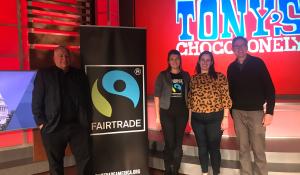
A certified Passive House will cut down the energy used to heat a home by a jaw-dropping 90 percent.
Jim Conlon lives and breathes energy efficiency—as president of Elysian Energy, he oversees hundreds of energy audits every year and provides energy-efficiency consulting to green builders in the greater DC area. What’s got him excited lately is the movement to bring super-efficient Passive Houses to the mainstream.
“One of my employees had read about Passive Houses and asked me to take a look. I immediately fell in love,” he says. So Conlon, who teaches classes on energy audits in his spare time at the Green Building Institute (GBI), set out to bring a Passive House course for home builders to GBI.
“It was very rigorous training, even for those of us who should already know about green building stuff. And it really blew our doors off,” he says.
So what are Passive Houses, and why is this green-building professional over the moon about them? Created in 1996 by two German scientists, Passive House certification is likely the most stringent standard for energy efficiency in the world. While green building certifications like LEED and Energy Star Homes are comparatively easy to achieve with a few modifications, building or retrofitting a Passive House requires the very best energy-efficiency technology available.

Courtesy: OurPassiveHouse.org.
A Passive House will cut down the energy used to heat a home by a jaw-dropping 90 percent, and will reduce the total energy use by at least 60-70 percent—all while providing excellent indoor-air quality.
“It starts out with the goal of a home that is really high-performance,” says Conlon. “If something is good, then let’s be great. If reducing drafts is good, eliminating them is better. If more insulation is better, then let’s insulate the heck out of these things.”
Joe and Rebecca (last name withheld) can attest to that. In 2008, the couple had finally saved up enough money to make their drafty 1960s home in Salt Lake City, UT, greener and more efficient. Then their architect suggested building a certified Passive House instead.
Like all Passive Houses, Joe and Rebecca’s new home is so well sealed that it doesn’t need an “active” standard furnace for heating, relying instead on super-efficient insulation, triple-paned windows, captured heat from appliances, and passive solar building techniques that maximize the sun’s heat—such as having many south-facing windows to capture the sun’s strongest rays.
Because they’re so airtight (Joe says it’s like “living in a very comfortable thermos”), Passive Houses also have a Heat Recovery Ventilation system, which exchanges the indoor air for fresh air from outside, while keeping the heat inside.
A system with added humidification is available for homes in dry climates, and those in hot climates may need a small supplemental air conditioner.
“The comfort surprised me the most,” says Joe of his Passive House. “It gets cold here in Utah, and in a traditional home, you always kind of know what it’s like outside in winter—the walls are cold, or you’ll walk past a drafty window. In this house, you can’t sense that. There have been times where we’ve walked outside and went, ‘Holy crap, it’s cold out here!’ And then we have to go back in and put on another layer.”
You don’t have to pursue Passive House certification to build one. Joe says he and Rebecca did so to help out their architect and because “being the first
in Utah held some allure.” You can also retrofit an existing house into a Passive
House, though the process is currently quite extensive. If you’re not willing to tear your walls down to the studs, a certified Passive House consultant can still give you advice on incorporating some Passive House elements.
Joe estimates that they spent 10-20 percent more than building a conventional home, but their average monthly energy bill has gone down from $120 to $20. According to the Passive House Institute US (PassiveHouse.us), when you factor in energy savings, constructing or retrofitting a Passive House can be less resource-intensive over its lifetime than living in an existing conventional home.
Today, over 15,000 Passive Houses and buildings have been certified in Europe. The standard has only recently made it to the US, but it’s quickly catching on.
Joe says he and Rebecca “absolutely love” their new home: “I can’t think of a single drawback.”
And Jim Conlon says his dream is to build his own Passive House. “I know how true and great they are in terms of big picture, and they’re healthy and comfortable—and super cheap, when you account for all utility bills you’d pay through its lifetime,” he says. “I joke that Passive House is my new religion.”
--Tracy Fernandez Rysavy







